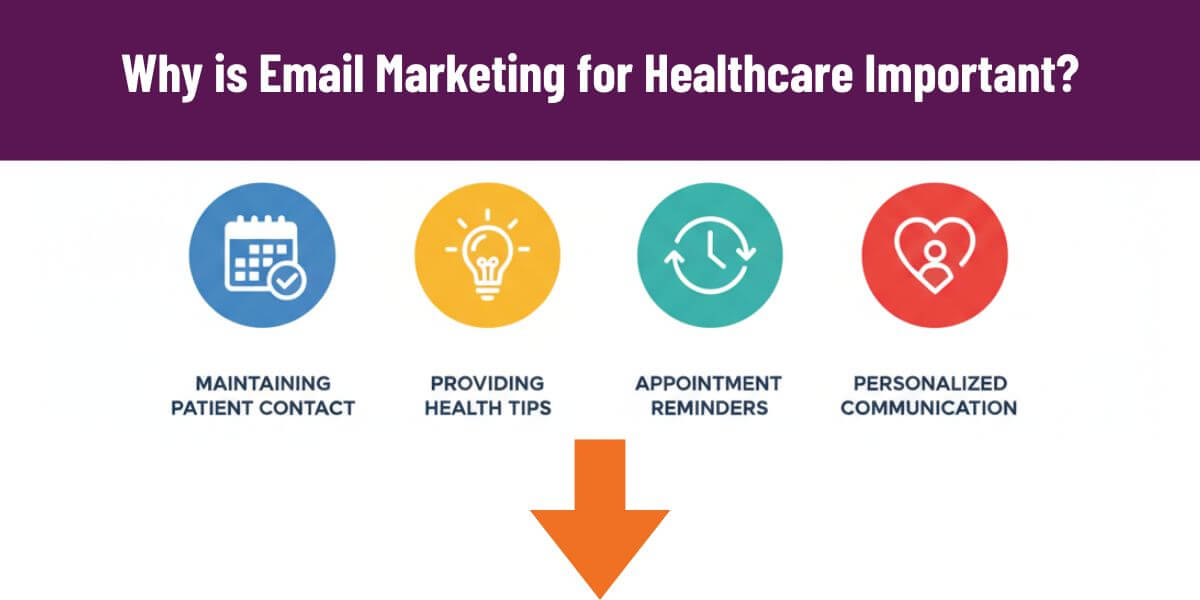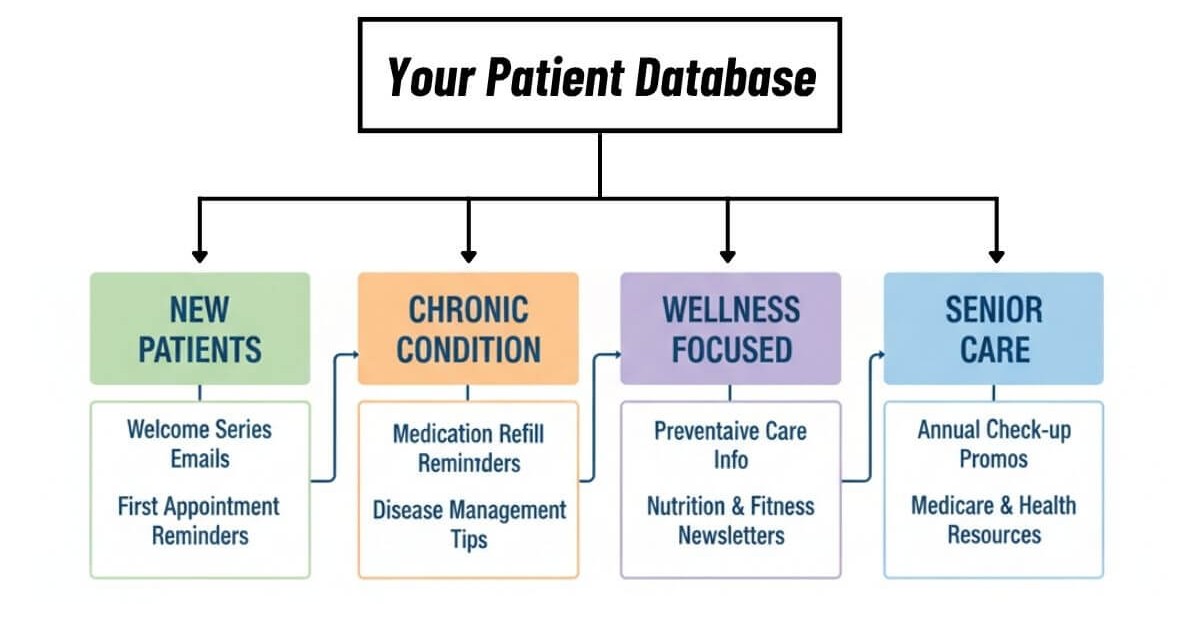
A Guide to Healthcare Email Marketing for Patient Retention
In the bustling world of healthcare, retaining patients isn't just about top-notch medical treatment; it's about fostering ongoing relationships and engagement. One of the most powerful tools at your disposal is an effective email marketing campaign. Let’s dive into the art of healthcare email marketing and how it can work wonders for patient retention.

Why is Email Marketing for Healthcare Important?
With the right strategy, email marketing can help you:
- Maintain regular contact with your patients
- Provide valuable health tips
- Remind patients of appointments
- Offer personalized communication that makes patients feel valued and understood
Additionally, it serves as an educational platform, providing useful health information that can improve patient outcomes. Ultimately, it keeps patients engaged with your practice, encouraging them to utilize your services more frequently.
Step 1: Focus on Personalization
Personalization is the secret sauce of healthcare email marketing. When patients receive emails that feel tailored to their specific needs and interests, they are more likely to engage with the content. Here’s how to craft personalized email campaigns that keep your patients coming back:
Segment Your Audience
The first step in any successful email marketing for healthcare is to segment your audience. Divide your patients into different groups based on age, medical history, and preferences. This allows you to send targeted messages that are relevant to each group.
For example, new patients can receive welcome emails with information about your practice and what they can expect, while patients with chronic conditions might benefit from regular updates on managing their condition and notifications about upcoming events or support groups.

Use Patient Data Wisely
Leverage the data you have (while being mindful of HIPAA) to create personalized content. That shows patients you pay attention to their individual needs. For instance, sending personalized appointment reminders can ensure they don’t miss their scheduled visits, and sharing health tips tailored to their medical history can help them better manage their health.
Write Engaging Subject Lines
Your email subject line is the first thing a patient sees, and it can make or break your open rates. Crafting compelling and engaging subject lines is crucial for the success of your healthcare email marketing campaign. To create effective subject lines, keep them short and sweet, use the patient’s name for a personal touch, and highlight the benefit or value of opening the email. For example:
- “Michael, Don’t Miss Your Annual Check-Up!”
- “3 Tips to Manage Your Diabetes Effectively”
- “How to Boost Immunity This Season”
Step 2: Create Valuable Content
Most healthcare practices obsess over what type of content to send, educational tips versus testimonials versus appointment reminders. They're optimizing for the wrong thing.
Healthcare emails average 2-3% click-through rates across the board, but birthday emails hit 56% open rates - three times higher than standard emails sent to the same people. Adding video to any email can increase click-through rates by 300%. The difference between content that gets ignored and content that drives action isn't the category, it's personalization, timing, and format.
Content Types Worth Including
Educational content. Educational emails outperform average healthcare content (4.4% open rates versus the 3.0% baseline). Share preventive care guidance, practical tips for managing chronic conditions, and health trend updates relevant to your patient demographics. Turn the questions patients ask during appointments into email content.
Patient stories and testimonials. Real patient experiences build trust faster than marketing copy. Share success stories from patients who've managed conditions effectively. Keep these specific, "Dr. Smith helped me lower my blood pressure" beats generic praise. Match testimonials to audience concerns: diabetes management stories for diabetic patients, pediatric care examples for parents.
Interactive elements. Use surveys and quizzes only when they serve a clear purpose. Patient satisfaction surveys give you actionable feedback. A quiz on healthy lifestyle choices can inform and engage. Skip random polls that waste time.
What Actually Drives Engagement
The content type matters less than these factors:
- Personalization. Birthday and milestone emails achieve 56% open rates because they're personally relevant. Segment by patient demographics, conditions, or appointment history.
- Video format. Video increases click-through rates by 300%. Even simple smartphone videos of providers explaining common conditions outperform text-heavy emails.
- Channel choice. Appointment reminders sent via text hit 98% open rates; email reminders only reach 20-30%. Use the right channel for time-sensitive communication.
Make every email personally relevant, easy to consume, and sent through the right channel. That's what moves engagement numbers.
Step 3: Follow Best Practices for Healthcare Email Marketing
To ensure your email marketing campaigns are effective and compliant, follow these best practices:
Ensure Compliance
As we’re sure you know, healthcare providers must adhere to regulations such as HIPAA. Ensure that your email campaigns are compliant with all relevant laws and that patient privacy is protected.
Optimize for Mobile
A significant portion of emails is opened on mobile devices. Make sure your emails are mobile-friendly, with responsive design and easily clickable links. This ensures that your patients can read and interact with your emails regardless of the device they use.
Outside of just mobile design in your healthcare email campaigns, here's some more email design best practices to consider:
Test and Measure
Continuously test different elements of your emails, such as subject lines, content, and send times. Use analytics to measure the success of your campaigns and make data-driven decisions. Testing allows you to understand what works best for your audience and improve your email marketing strategy accordingly.
Provide an Easy Opt-Out
While you want to retain patients, it’s crucial to provide an easy way for them to unsubscribe if they wish. This builds trust and ensures that your email list remains engaged. An easy opt-out option shows respect for your patients’ preferences and helps maintain a positive relationship with them. In short: don’t be clingy.
Wrapping Up
Healthcare email marketing is a powerful tool for patient retention. By crafting personalized and engaging email campaigns, you can build stronger relationships with your patients and keep them coming back. Remember to segment your audience, use patient data wisely, create valuable content, and follow best practices to maximize the effectiveness of your campaigns.
By mastering the art of healthcare email marketing, you’re not just sending emails; you’re building lasting relationships with your patients. Now that’s something worth celebrating. Need help kickstarting the perfect email campaign? We’ve got you. Get in touch with us — we can’t wait to make some marketing magic together.
share this article
Explore Similar Posts
Get In touch
We’d love to share how digital marketing can help elevate your brand — and your business’s bottom line.





.jpg)


